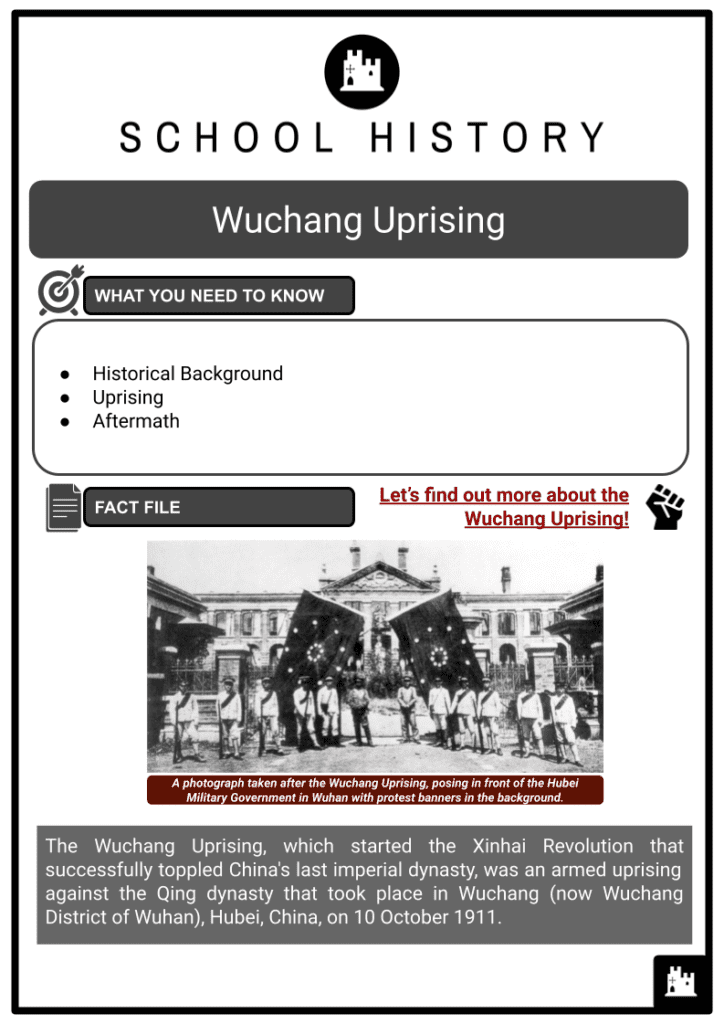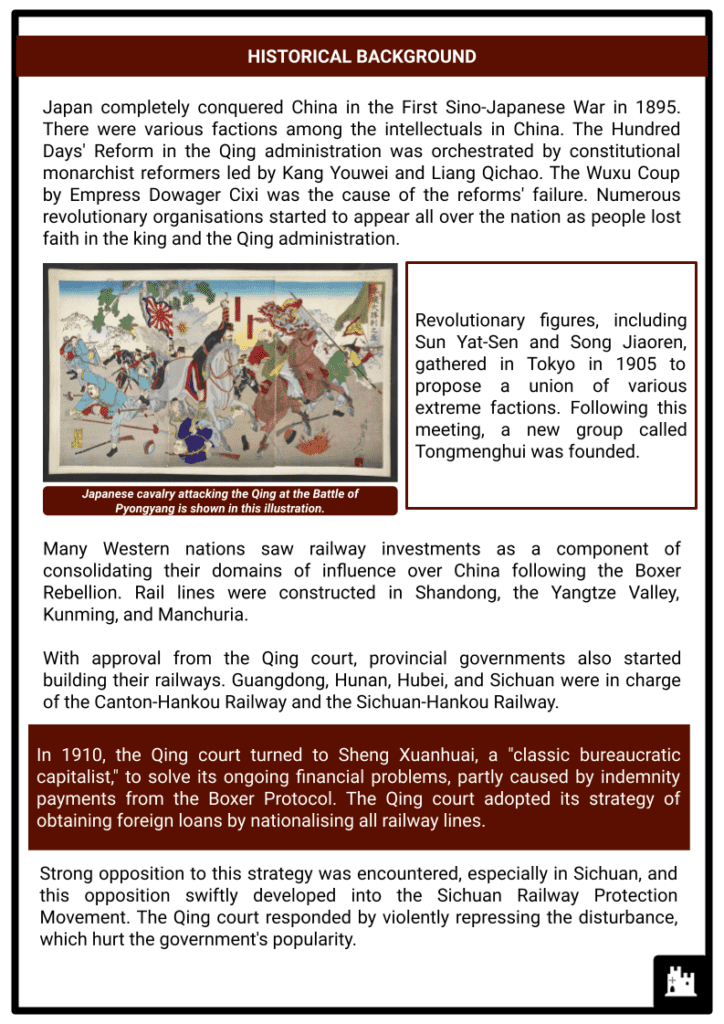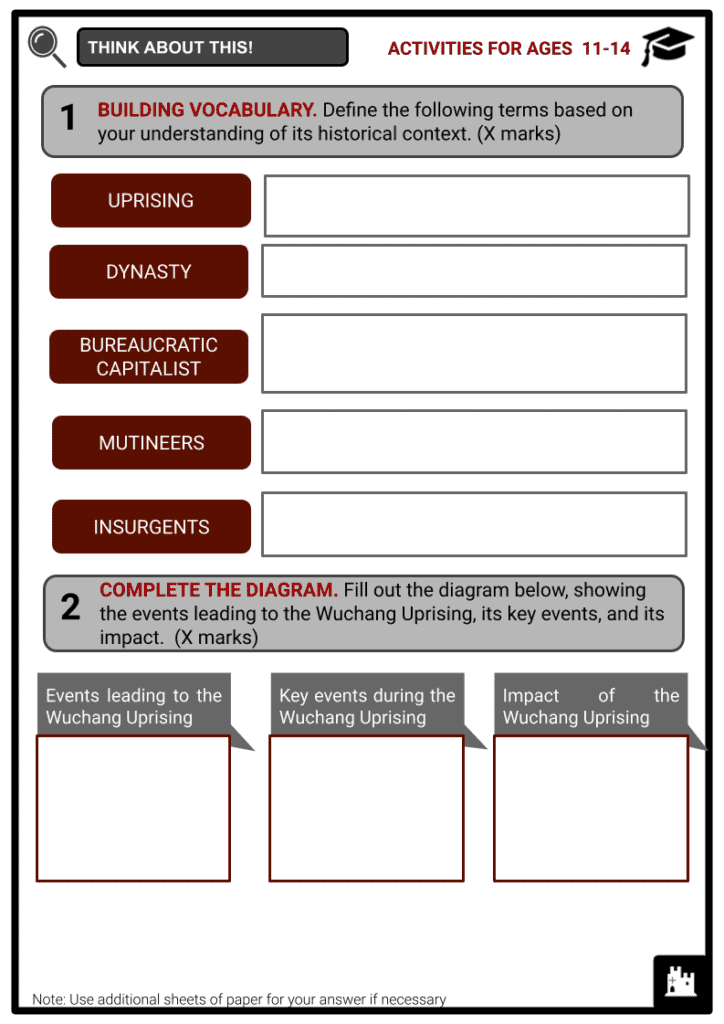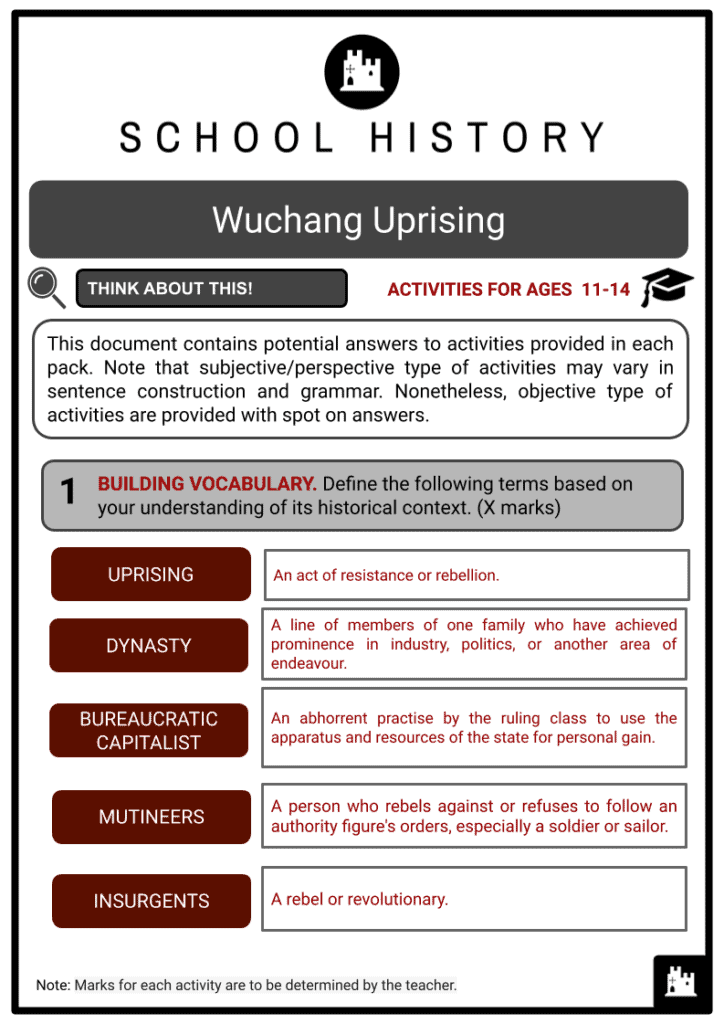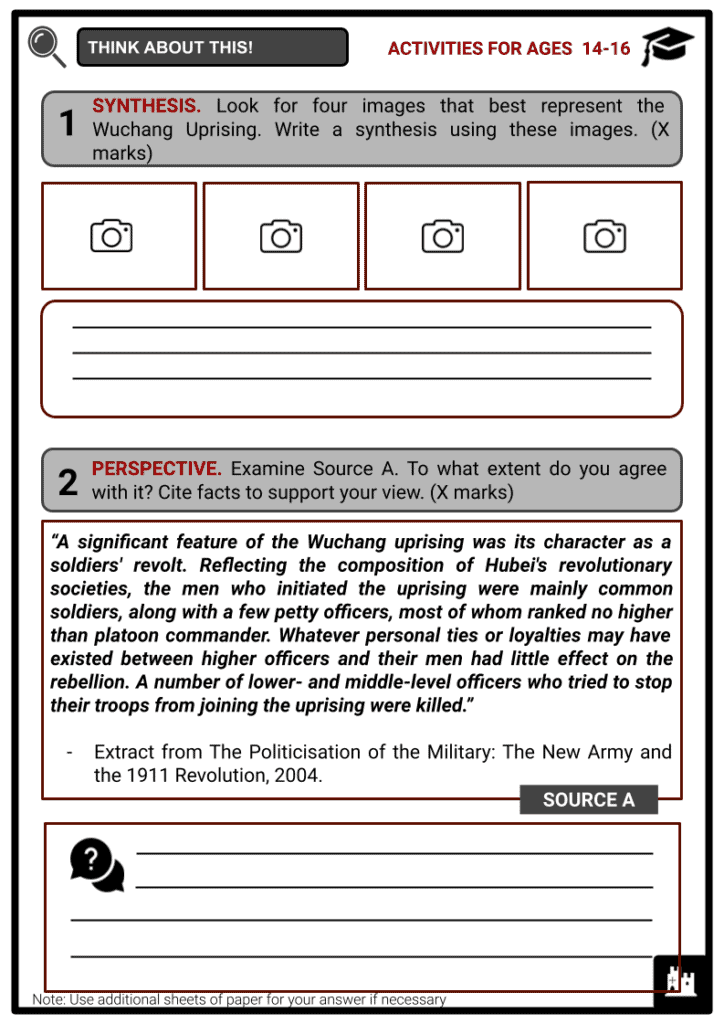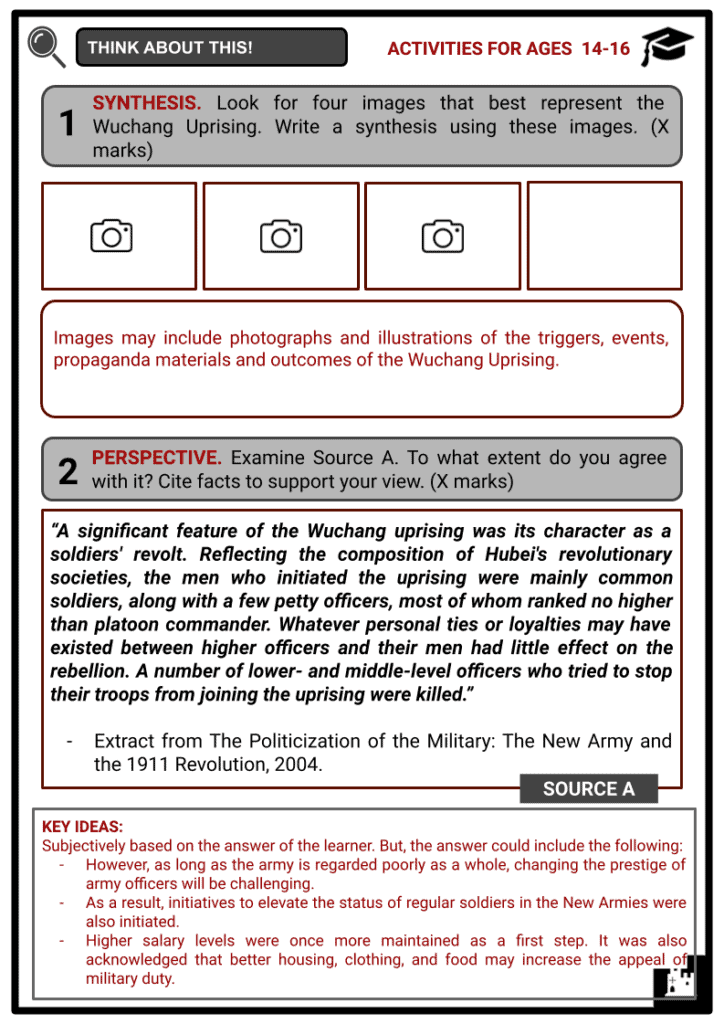Wuchang Uprising Worksheets
Do you want to save dozens of hours in time? Get your evenings and weekends back? Be able to teach about the Wuchang Uprising to your students?
Our worksheet bundle includes a fact file and printable worksheets and student activities. Perfect for both the classroom and homeschooling!
Table of Contents
Add a header to begin generating the table of contents
Summary
- Historical Background
- Uprising
- Aftermath
Key Facts And Information
Let’s find out more about Wuchang Uprising!
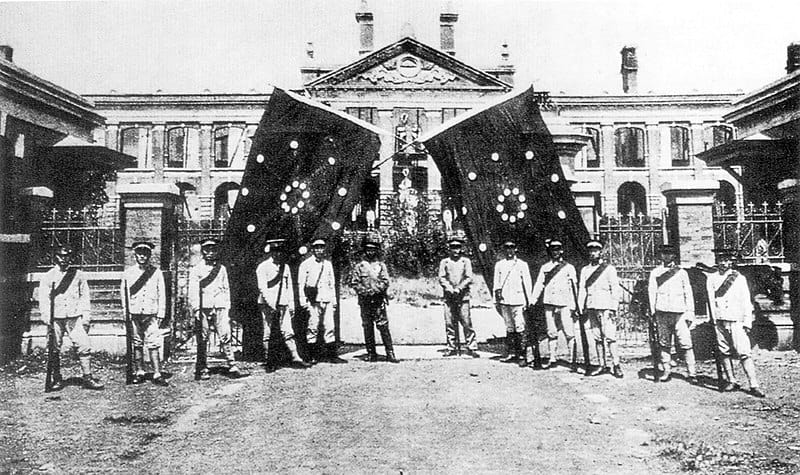
The Wuchang Uprising, which started the Xinhai Revolution that successfully toppled China's last imperial dynasty, was an armed uprising against the Qing dynasty that took place in Wuchang (now Wuchang District of Wuhan), Hubei, China, on 10 October 1911.
HISTORICAL BACKGROUND
- Japan completely conquered China in the First Sino-Japanese War in 1895. There were various factions among the intellectuals in China. The Hundred Days' Reform in the Qing administration was orchestrated by constitutional monarchist reformers led by Kang Youwei and Liang Qichao. The Wuxu Coup by Empress Dowager Cixi was the cause of the reforms' failure. Numerous revolutionary organisations started to appear all over the nation as people lost faith in the king and the Qing administration.
- Revolutionary figures, including Sun Yat-Sen and Song Jiaoren, gathered in Tokyo in 1905 to propose a union of various extreme factions. Following this meeting, a new group called Tongmenghui was founded.
- Many Western nations saw railway investments as a component of consolidating their domains of influence over China following the Boxer Rebellion. Rail lines were constructed in Shandong, the Yangtze Valley, Kunming, and Manchuria. With approval from the Qing court, provincial governments also started building their railways. Guangdong, Hunan, Hubei, and Sichuan were in charge of the Canton-Hankou Railway and the Sichuan-Hankou Railway.
- In 1910, the Qing court turned to Sheng Xuanhuai, a "classic bureaucratic capitalist," to solve its ongoing financial problems, partly caused by indemnity payments from the Boxer Protocol. The Qing court adopted its strategy of obtaining foreign loans by nationalising all railway lines.
- Strong opposition to this strategy was encountered, especially in Sichuan, and this opposition swiftly developed into the Sichuan Railway Protection Movement. The Qing court responded by violently repressing the disturbance, which hurt the government's popularity.
- In Chengdu, there were numerous strikes and protests by 11 August. The Viceroy of Sichuan, Zhao Erfeng, was instructed to "intervene vigorously" on 7 September. He ordered the arrest of influential Railway Protection League leaders and subsequently ordered troops to fire on the demonstrators.
- The local press, however, chastised Hunan and Hubei for not nationalising their railway systems. Public confidence in the Qing government kept declining in reaction to the worsening of the railway crisis.
UPRISING
- The Literary Society and the Progressive Association were two revolutionary organisations in the Wuhan region. Jiang Yiwu and Sun Wu, the leaders of these two factions, collaborated closely as commander and chief of staff during Wuchang uprising.
- These two organisations started negotiating with the Tongmenghui in September 1911 to work together during the subsequent rebellion. The Mid-Autumn Festival, which takes place on 6 October, was the chosen date. Due to inadequate planning, the date was subsequently postponed. On 9 October, as Sun Wu was overseeing the construction of explosive devices in the Russian concession in Hankou, one of the explosives unexpectedly detonated, leaving Sun with critical injuries.
- The medical staff recognised him when he was admitted and informed the Qing authorities. The revolutionaries in the New Army stationed at Wuchang were about to be arrested by the Qing authorities when their names were made public. Jiang Yiwu of the Literary Society decided to start the rebellion right away. Still, when the Viceroy of Huguang learned of the plan, he ordered a crackdown on the revolutionaries and had several critical members arrested and put to death.
- Intense fighting ensued as Wu Zhaolin, the New Army's provisional commander, led the revolutionary elements of the New Army in staging a mutiny against the Qing garrison in Huguang on the evening of 10 October. They successfully took the Viceroy's residence and secured strategic points in the city.
- The Viceroy fled, and the Qing garrison broke down. More than 500 Manchu soldiers were slain, and more than 300 were captured between the evening of 10 October and noon on 11 October.
- On 11 October, the mutineers formed a military administration representing the Hubei province and persuaded Li Yuanhong, one of the top New Army officers, to serve as interim commanders. Li was initially opposed to the proposal, but he was persuaded after the mutineers contacted him. After confirming that outside forces would not interfere with the rebellion, the newly formed military government raised the "iron blood 18-star flag" and signalled the other provinces to do the same.
- Hankou and Hanyang were taken prisoner when the revolutionaries advanced on the rest of the province on 12 October.
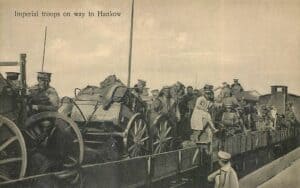
Beiyang Army on the way to Hankou, 1911. - The Qing authorities requested assistance from Yuan Shikai and the Beiyang Army to march against Wuchang in response to the insurrection. To assume command of the revolutionaries, Huang Xing would travel to Wuhan in the first few days of November. The Beiyang Army then attacked the positions of the revolutionary forces in Wuhan, allowing the imperial troops to quickly retake Hankou on 1 November and Hanyang on 27 November.
- After capturing these two locations, the onslaught was put on hold while Yuan Shikai started conducting covert talks with the insurgents.
AFTERMATH
- The Wuchang Uprising caught many revolutionary leaders off guard; Huang Xing and Song Jiaoren could not get to Wuchang in time. When the revolt started, Sun Yat-Sen was visiting the United States and speaking to Chinese immigrants to solicit financial assistance.
- Sun received a telegraph from Huang Xing, but he needed help understanding it. The following day, he read about the rebellion in the newspaper.
- Following the triumphant rebellion in Wuchang, the revolutionaries despatched telegrams to other provinces urging them to follow suit. By the end of December 1911, 18 areas in Southern and Central China had agreed to break away from the Qing authority. Sun returned to China in the same month to participate in the interim presidential election, where he won.
- The Wuchang Uprising caught many revolutionary leaders off guard; Huang Xing and Song Jiaoren could not get to Wuchang in time. When the revolt started, Sun Yat-sen was visiting the United States and speaking to Chinese immigrants to solicit financial assistance. On 1 January 1912, representatives from the provinces that had stated their intention to secede convened and announced the creation of the Chinese Republic as Sun took office as its first leader. The Qing government was eventually forced to submit due to negotiations between the nascent republic and Yuan Shikai, who was offered the presidency. On 12 February 1912, Aisin Gioro Puyi, the Xuantong emperor, asked Empress Dowager Longyu to declare his renunciation of the throne. This signalled the end of the Qing dynasty.

